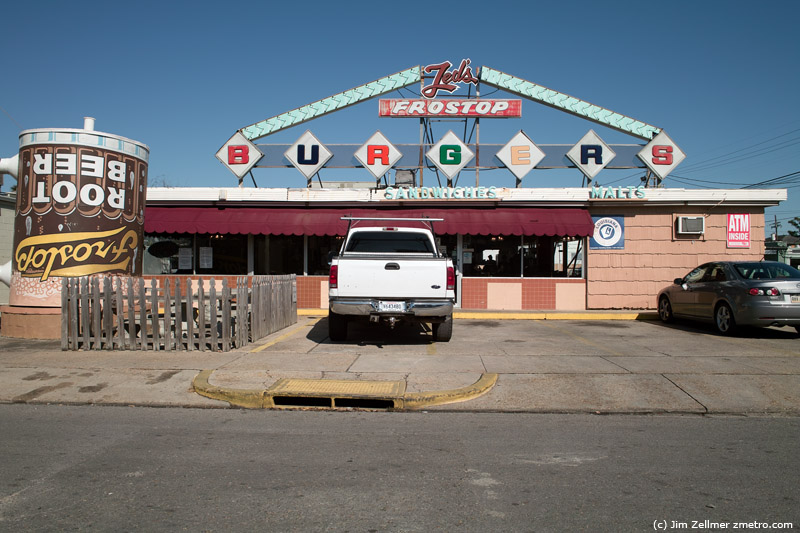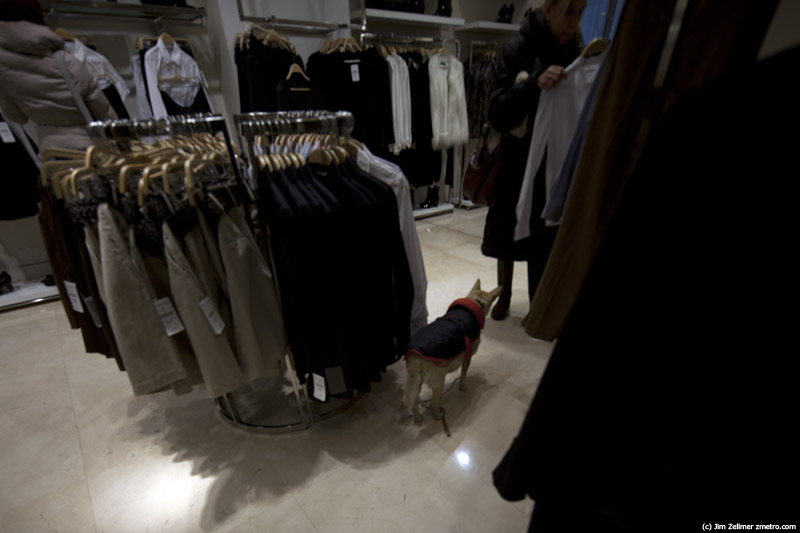
Burger Joint

Panorama: Lingotto Pinacoteca Giovanni e Marella Agnelli @ Turin
Pinacoteca Giovanni e Marella Agnelli:
In a fascinating space designed by the architect Renzo Piano inside the historic industrial complex of the Lingotto in Turin, the Pinacoteca Giovanni e Marella Agnelli permanently houses 25 masterpieces from Giovanni and Marella Agnelli private collection.
Opened on September 20th, 2002, the gallery marks the final step in the twenty-year-long restructuring process of the whole Lingotto site.
The structure that today hosts the picture gallery of the Giovanni and Marella Agnelli Foundation in the “Scrigno” (literally, jewel box or treasure chest, an extraordinary container that dominates the roof-top test track), is the result of a long historical and architectural process of development that begins at the turn of the twentieth century. After this huge conversion process, the 90 years old building maintains the architectural power and freshness of the car factory designed by Giacomo Mattè Trucco, and wends its way effortlessly to the Lingotto designed by Renzo Piano.
A stunning place, particularly the roof top race track on the old Fiat factory.
View the full screen panorama here.
When China Ruled the World Or why the “China Century” will be the shortest on record
I’m here to tell you that America plunged its fingertips into the Middle Kingdom’s body politic across the 1970s, beginning with Nixon going to China in 1972 and culminating with Jimmy Carter’s normalization of relations in 1979. The first embrace allowed aged Mao Tse-tung to extinguish his nonstop internal purge known as the Cultural Revolution by firewalling his fears of Soviet antagonism. The second cemented China’s wary-but-increasingly-warm relationship with the United States and allowed Deng Xiaoping, who narrowly survived Mao’s insanities, to dismantle the dead emperor’s dysfunctional socialist model, quietly burying Marx with the most revolutionary of eulogies — to get rich is glorious!
Deng chose wisely: Reversing Mikhail Gorbachev’s subsequent logic, he focused on the economics while putting off the politics. This decision later earned him the sobriquet “the butcher of Tiananmen” when, in 1989, the political expectations of students quickly outpaced the Party’s willingness for self-examination. But it likewise locked China onto a historical pathway from which it cannot escape, or what I call the five D’s of the dragon’s decline from world-beater to world-benefactor: demographics, decrepitude, dependency, defensiveness, and — most disabling of all — democratization.
Let us begin this journey right where Deng did, with a focus on the family.
Shopping with the Dog – Turin

The Hardy 2009-2010 Annual Report Photo
350K PDF. My dusk Hardy photo appears on the cover of their annual report. It was a beautiful evening. Much more on the Hardy Gallery, here.
I Chose Liberty
I Chose Liberty, a collection of short intellectual biographies of contemporary libertarians edited by Walter Block, is quite entertaining. Richard Epstein, Gordon Tullock, Judge Napolitano, John Hasnas, Ron Paul, Bryan Caplan, myself and many others are included.
Goldman’s pieties go too far
For sheer, toe-curling embarrassment, it’s hard to choose between last year’s populist attack on Goldman Sachs by the US Securities and Exchange Commission and this week’s cringe-worthy response from the investment bank.
Last April, when the SEC filed suit against Goldman, the bank could have fought back. The suit complained it had sold fancy mortgage securities without disclosing that a hedge-fund manager, John Paulson, was betting that those same securities would blow up. To which Goldman could have answered: so what? Any time an investment bank sells any derivative, it should be obvious to the buyer that somebody somewhere must be taking the other side. The SEC’s assertion that Goldman had misled customers about the nature of Paulson’s involvement was potentially more damaging, except that the SEC produced no evidence to make this charge stick.
It was surely not beyond the wit of Goldman’s publicists to communicate these simple points. Banks cannot be held responsible for the profits or losses of their clients, since middle-men necessarily have customers who lose as others win. But after one vain attempt to explain market making at a belligerent Senate hearing, Goldman’s boss, Lloyd Blankfein, gave up. He settled with the SEC, even though most lawyers think he could have beaten the charges. Then he ordered up an elaborate cleansing ritual to relaunch the firm of Goldman Sachs.
Several months later, the fruits of Goldman’s sun salutations are out. A 67-page manifesto of self-purification proclaims that “our clients’ interests always come first,” and that “if we serve our clients, our own success will follow.” But these pieties misrepresent the true nature of an investment bank just as surely as the SEC did.
Study: We’ve Got Plenty of Land for Biofuels
One of the great arguments against biofuels is the wisdom, if not the morality, of using land to produce fuel instead of food. But research out of Illinois suggests it doesn’t have to be an either-or proposition.
Researchers at University of Illinois Urbana-Champaign have found that biofuel crops cultivated on land unsuitable for food crops could produce as much as half the world’s current fuel consumption without adverse impact on food crops or pastureland.
The study, published in Environmental Science and Technology, identifies land around the world that is unsuitable for food production but could be used to raise biofuel feedstocks like switchgrass.
According to the researchers, many studies examining biofuel crop viability focus on yield — how productive the crop can be. They wanted to examine land availability to determine whether it is possible to produce sufficient biofuel to meet demand without sacrificing food production.
The Rise of the New Global Elite
IF YOU HAPPENED to be watching NBC on the first Sunday morning in August last summer, you would have seen something curious. There, on the set of Meet the Press, the host, David Gregory, was interviewing a guest who made a forceful case that the U.S. economy had become “very distorted.” In the wake of the recession, this guest explained, high-income individuals, large banks, and major corporations had experienced a “significant recovery”; the rest of the economy, by contrast—including small businesses and “a very significant amount of the labor force”—was stuck and still struggling. What we were seeing, he argued, was not a single economy at all, but rather “fundamentally two separate types of economy,” increasingly distinct and divergent.
This diagnosis, though alarming, was hardly unique: drawing attention to the divide between the wealthy and everyone else has long been standard fare on the left. (The idea of “two Americas” was a central theme of John Edwards’s 2004 and 2008 presidential runs.) What made the argument striking in this instance was that it was being offered by none other than the former five-term Federal Reserve Chairman Alan Greenspan: iconic libertarian, preeminent defender of the free market, and (at least until recently) the nation’s foremost devotee of Ayn Rand. When the high priest of capitalism himself is declaring the growth in economic inequality a national crisis, something has gone very, very wrong.
This widening gap between the rich and non-rich has been evident for years. In a 2005 report to investors, for instance, three analysts at Citigroup advised that “the World is dividing into two blocs—the Plutonomy and the rest”:
